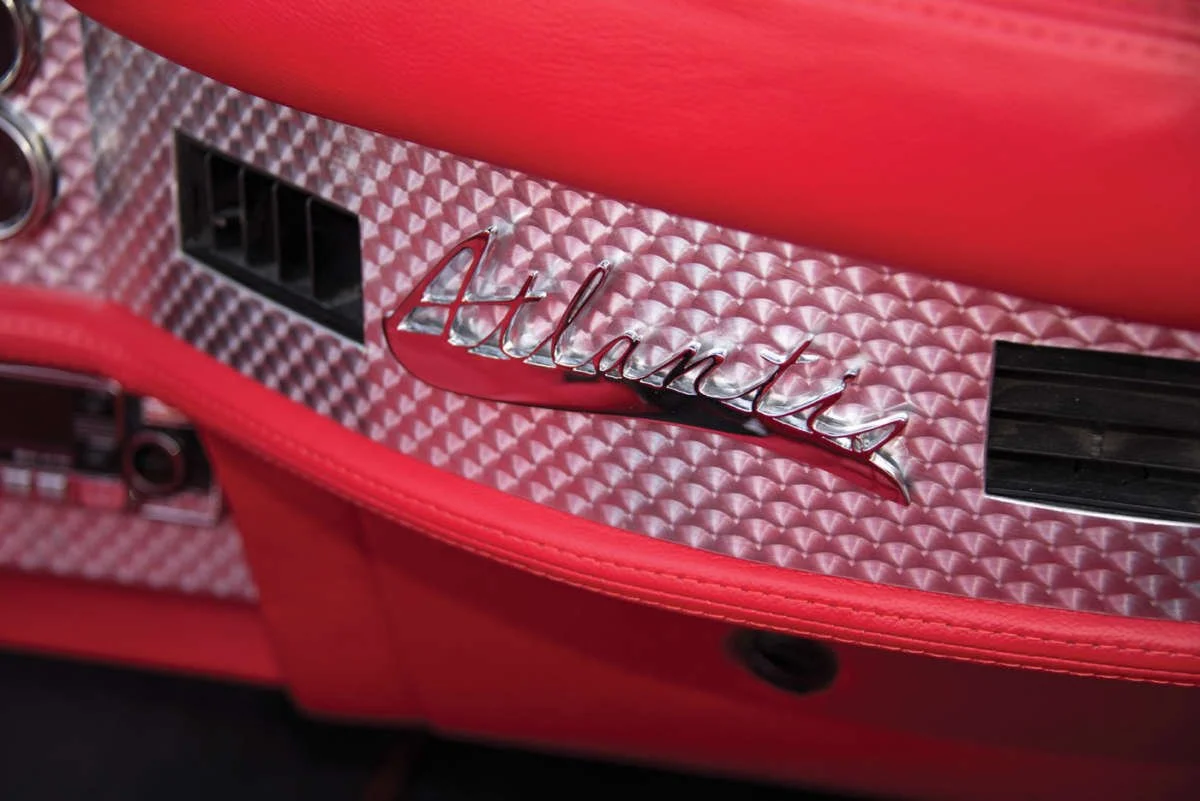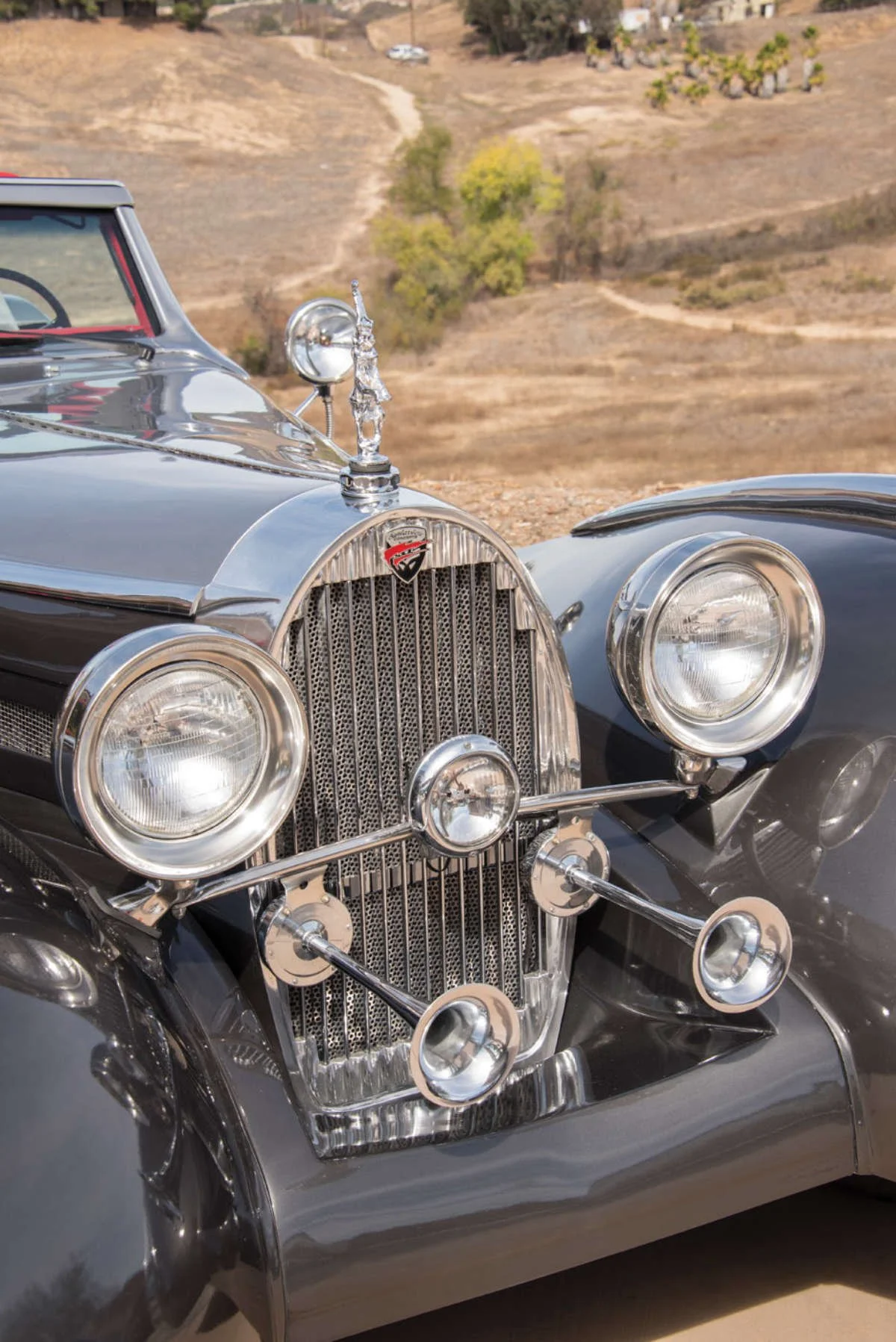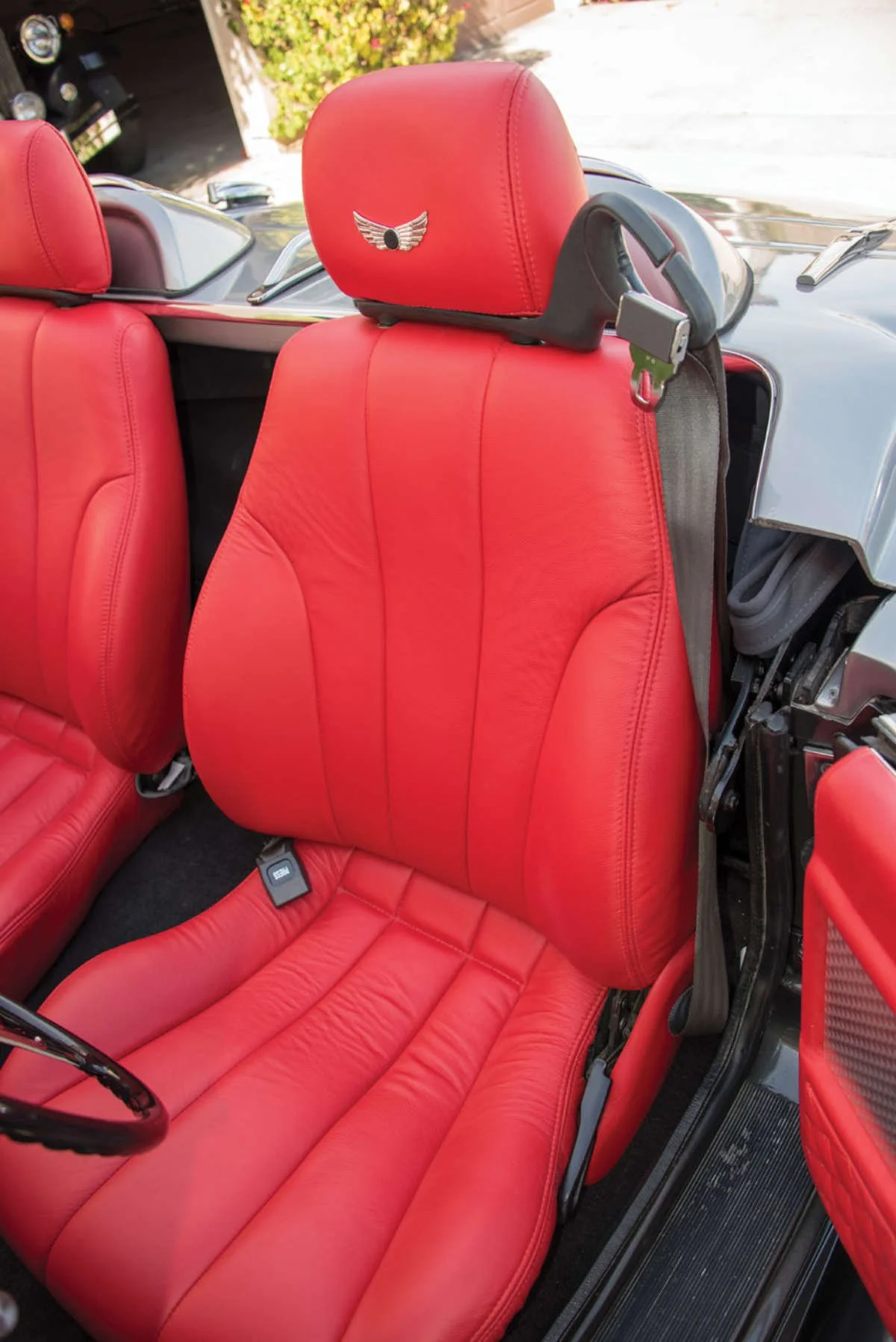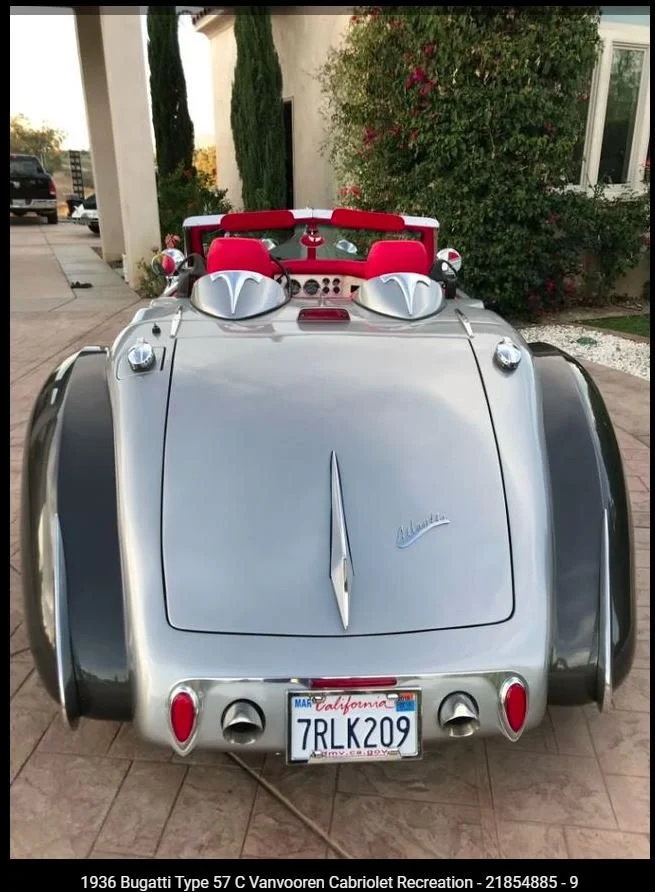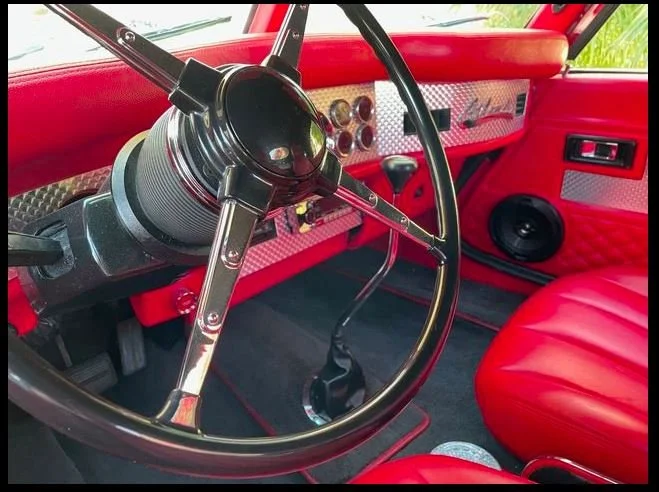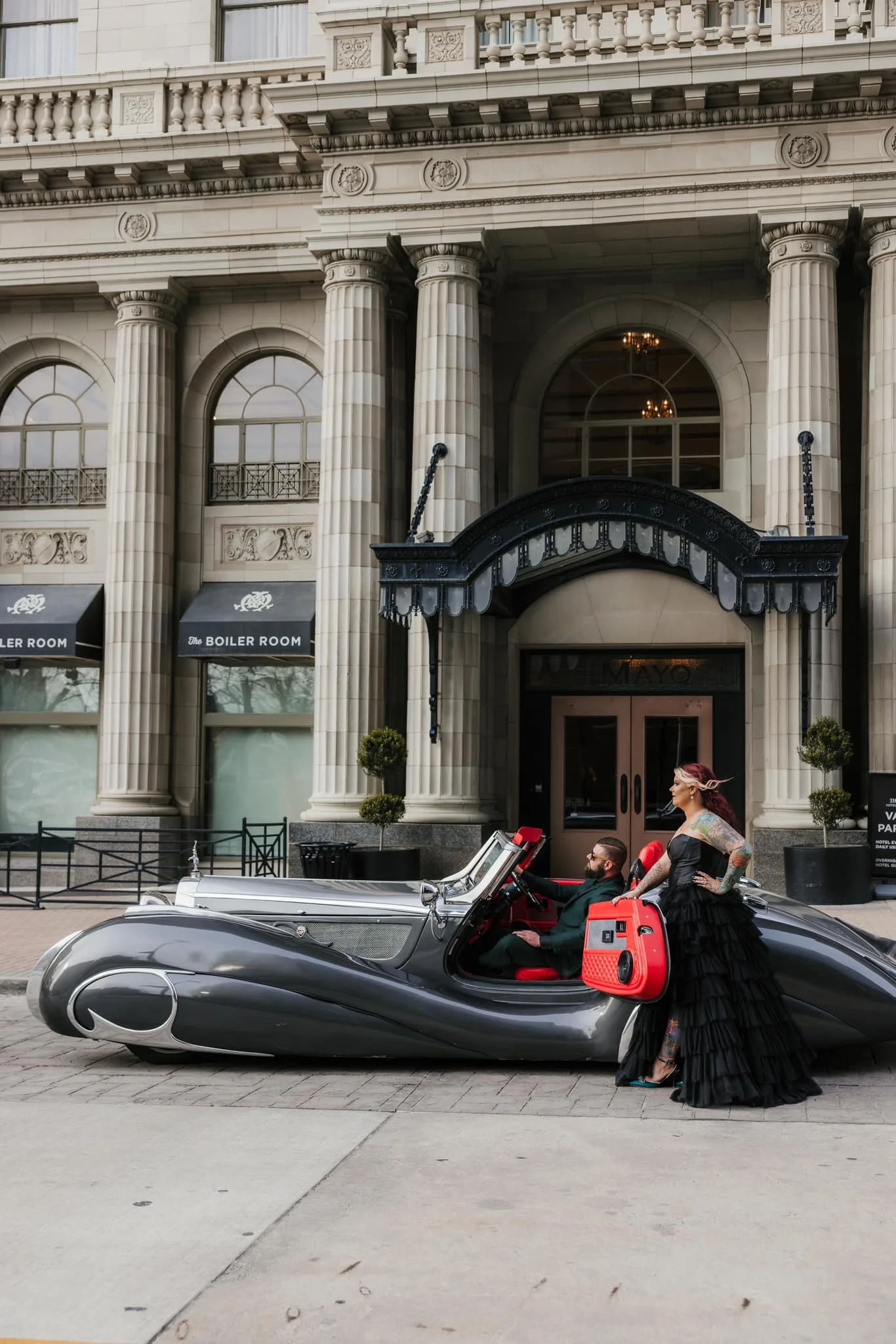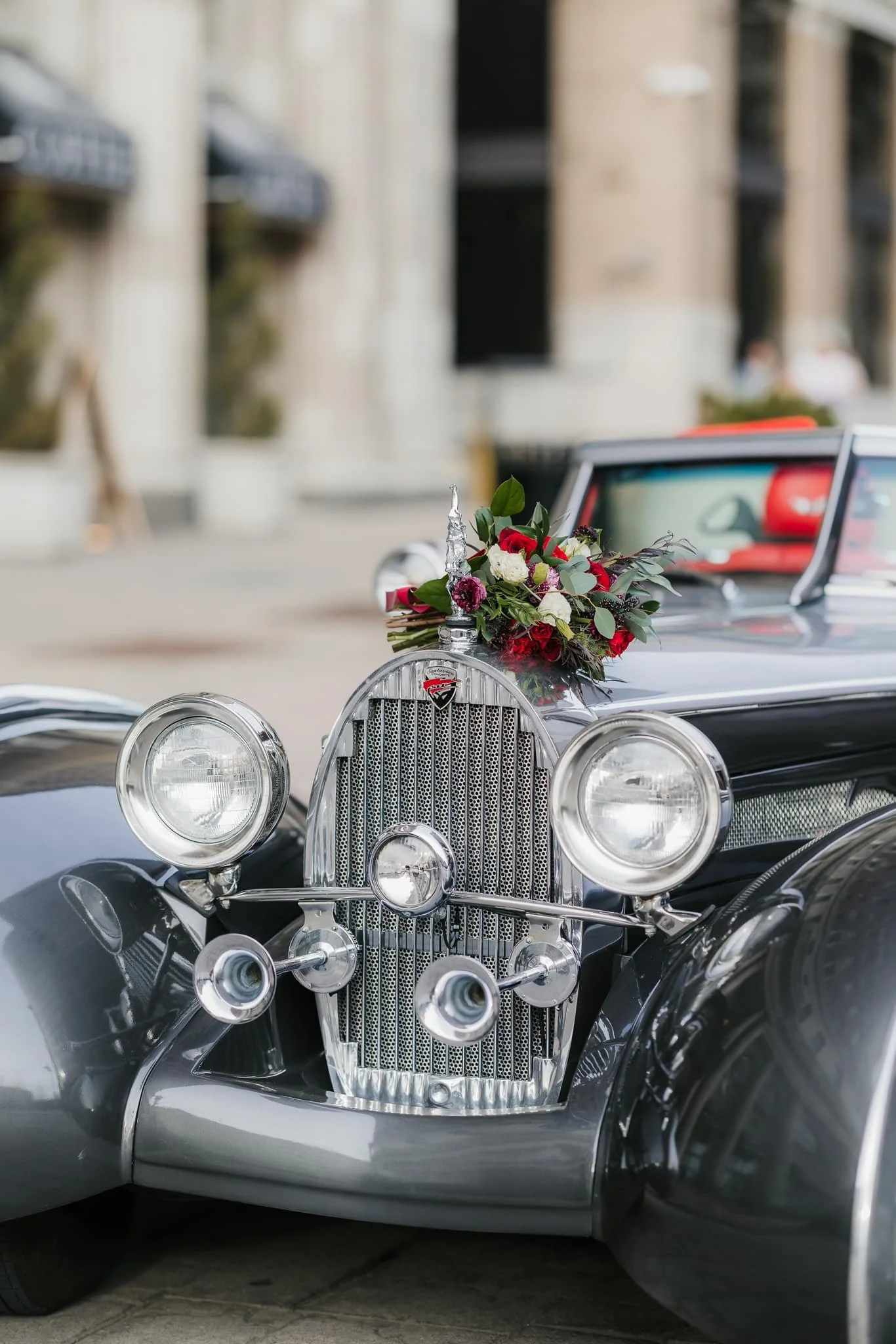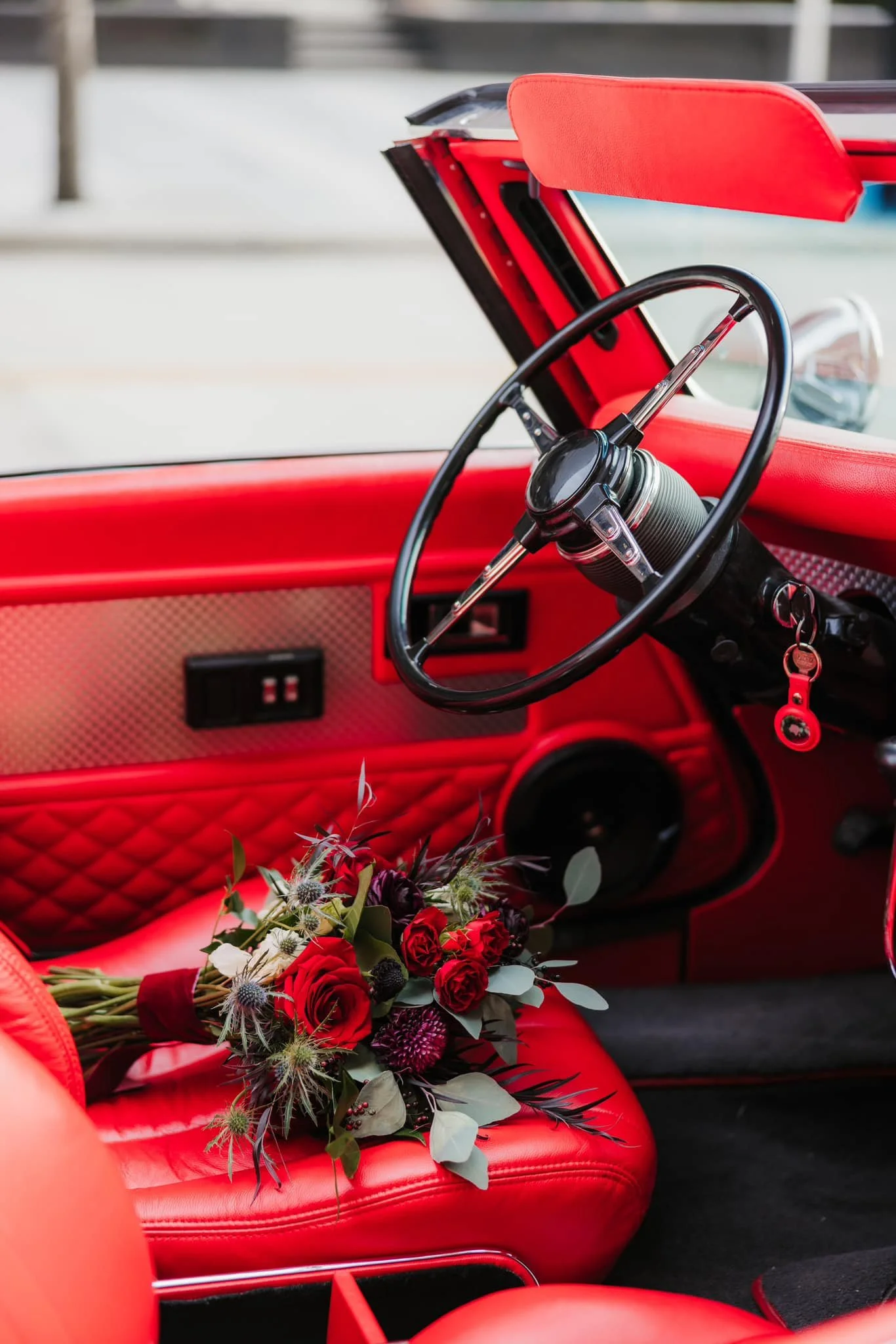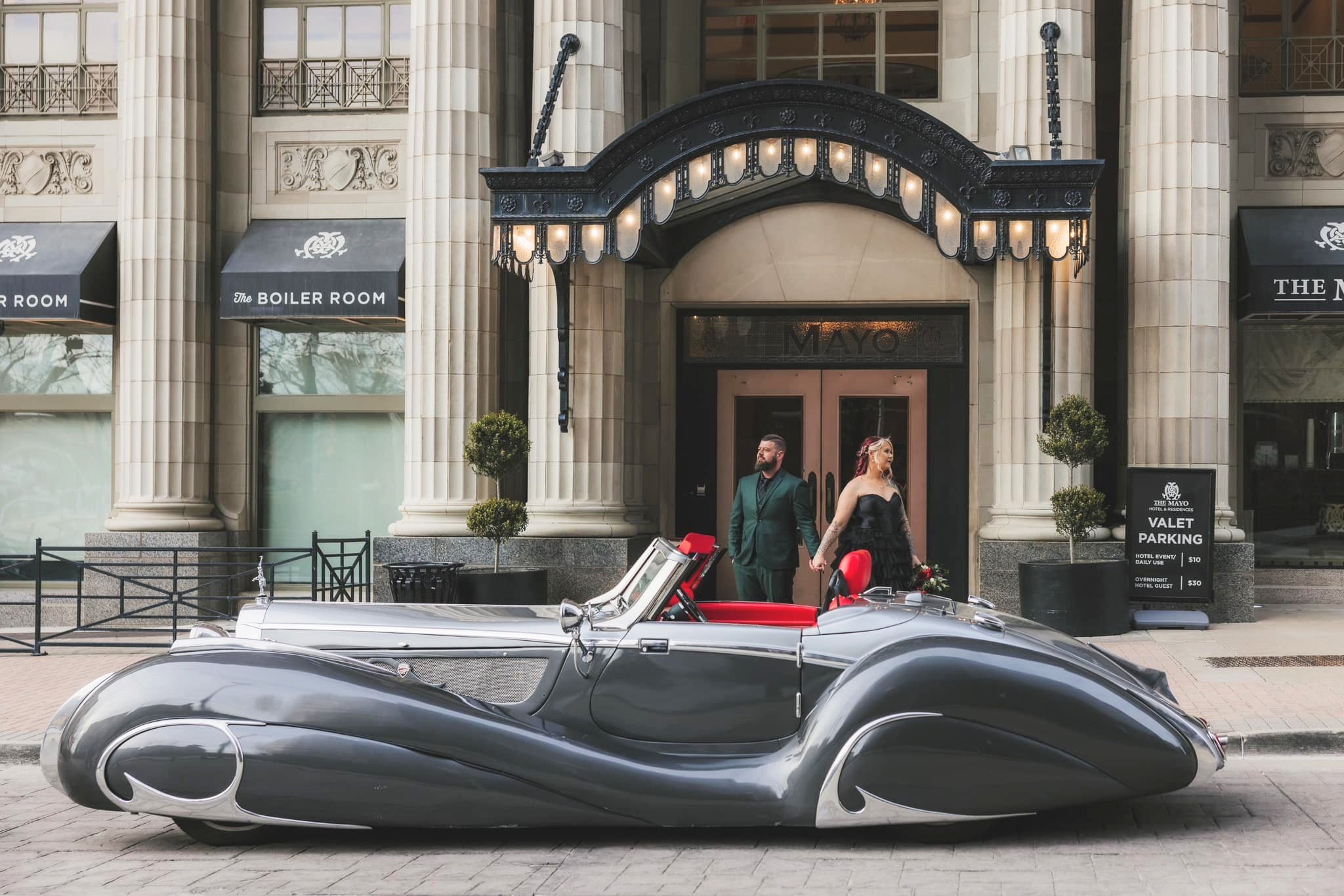
Tulsa Bugatti
1936 Bugatti Type 57 C
Robert Frost is widely known for his poem “The Road Not Taken,” as it wistfully recounts having to choose between two routes. Ultimately he realizes that taking the one less traveled “made all the difference.”
That could be said of Top Gun’s Ron Santarsiero, who has consistently demonstrated a preference for unusual, idiosyncratic car designs. A successful real estate investor by trade, but a passionate car builder by nature, he’s always had a fascination for both exotics and neoclassics and has built several of them over the years. Why such a radical departure from generally more popular replicas?
“I don’t want to leave this world driving someone else’s dream,” Ron notes. Indeed, that’s not likely, in view of the Atlantis neoclassic shown here, along with its similarly styled trike, the Atlantis Stargazer — named so for its open-air driving position.
What was the inspiration for these particular projects? “Life can be boring; life can be dull. Everybody is always looking for something new under the sun. I was no exception,” he explains. But everything that he liked or loved was always financially out of reach. The French cars, such as those extravagant, swooping shapes designed by Bugatti (especially the Type 57SC) and Figoni et Falaschi, each cost many millions of dollars.
Frustrated, Ron came to the realization that if he couldn’t afford to buy one, he would build it instead. Since he had a background in the arts, he decided to create his own version of those famous French curves, at a price he could afford.
To keep his approach practical, he started with a custom ladder frame taken from a Heritage Motors Mercedes 500K replica and fitted it with a Camaro front clip and rear end. The Heritage cockpit and main body served as a foundation for the design as well, but he elaborated on the shape in several distinctive ways.
Derived from a 1936 concept drawing that Ron came across in a book about French car designs, those teardrop front fenders were first sculpted out of foam. He then made molds and laid pieces up in fiberglass.
The trim, emblems and brightwork required a few different approaches. The rear fin, bumperettes and grille were first fabricated out of fiberglass and then taken to an aluminum foundry to be reproduced in metal.
Ron purchased the elephant hood ornament, used on the Bugatti Royale, from a collector and made reproductions of the design, which he also used on his Duesenberg replica. An independent fabricator in Mexico made up the Atlantis logo for the dash and rear deck, and the machine-turned metal panels for the dash and door panels are aftermarket items.
Power is on the modest side, using a Dodge Dakota V6 and automatic, since this car is meant as a boulevard cruiser. Ron notes that a Chevy 350 drivetrain was an option for the original Heritage replica and could be fitted here as well.
In contrast, the design and build process for the Atlantis Stargazer trike was somewhat different. It all started on a trip to the store, where Ron spotted a small-scale model of a Can-Am Spyder three-wheeler. On impulse, he took it home and began reshaping it with clay. Once done, he showed the 15-inch design to a friend, who works for the movie studios as a fabricator of various fantasy props and monsters out of fiberglass. Together they scaled up the model on a full-size Spyder, using only modeling clay. Parts were then taken off the clay, but no molds were made, as this design is unique a one-off. That’s unfortunate, as it has enticing lines.
Indeed, Ron gets lots of accolades whenever he takes these vehicles out to shows and events. All told, “The devil’s in the details,” Ron admits. But the car has a divine aspect as well, as he feels there’s nothing more rewarding than being a creator of something new and different.




